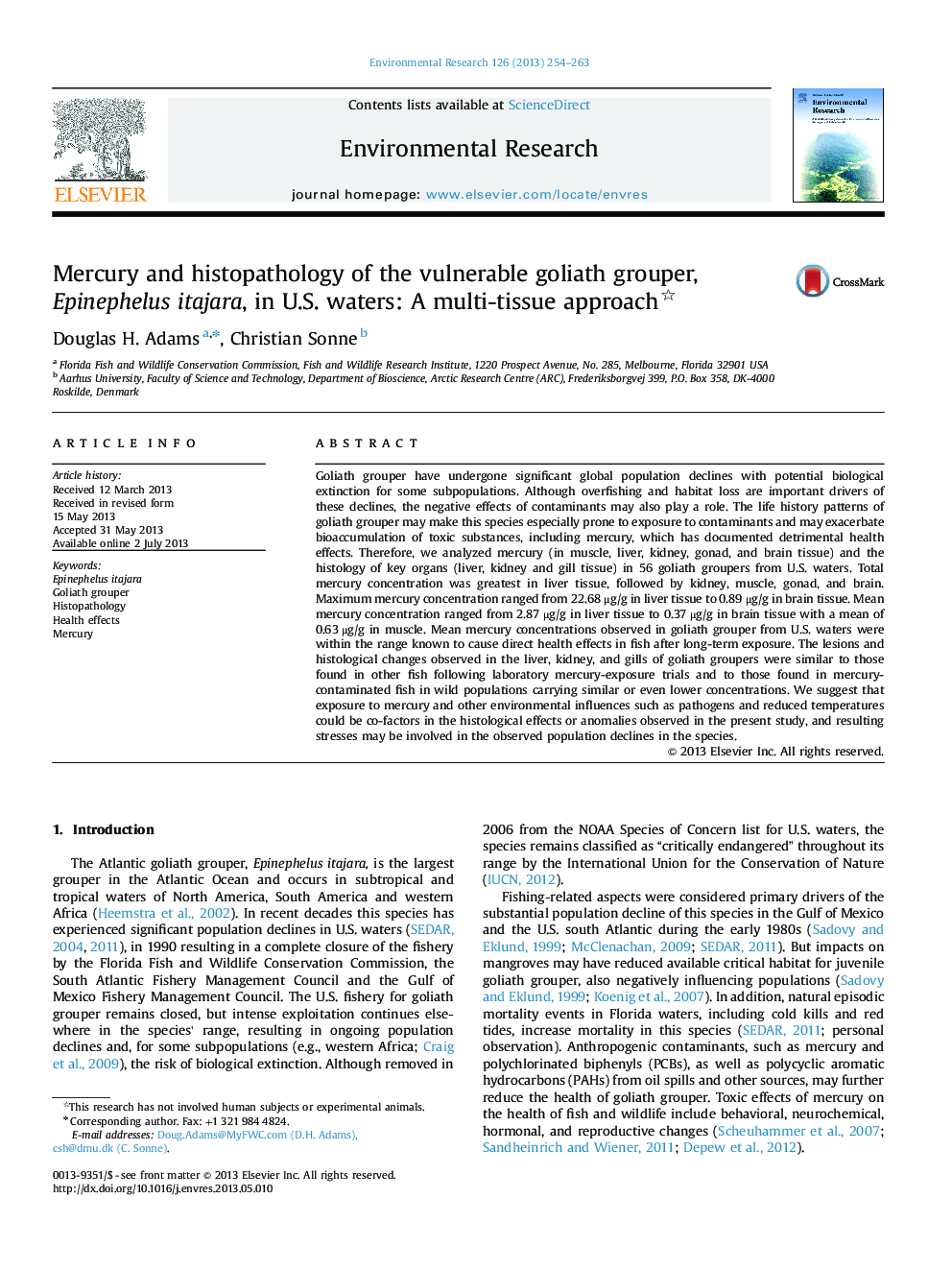| Article ID | Journal | Published Year | Pages | File Type |
|---|---|---|---|---|
| 6353194 | Environmental Research | 2013 | 10 Pages |
Abstract
Goliath grouper have undergone significant global population declines with potential biological extinction for some subpopulations. Although overfishing and habitat loss are important drivers of these declines, the negative effects of contaminants may also play a role. The life history patterns of goliath grouper may make this species especially prone to exposure to contaminants and may exacerbate bioaccumulation of toxic substances, including mercury, which has documented detrimental health effects. Therefore, we analyzed mercury (in muscle, liver, kidney, gonad, and brain tissue) and the histology of key organs (liver, kidney and gill tissue) in 56 goliath groupers from U.S. waters. Total mercury concentration was greatest in liver tissue, followed by kidney, muscle, gonad, and brain. Maximum mercury concentration ranged from 22.68 μg/g in liver tissue to 0.89 μg/g in brain tissue. Mean mercury concentration ranged from 2.87 μg/g in liver tissue to 0.37 μg/g in brain tissue with a mean of 0.63 μg/g in muscle. Mean mercury concentrations observed in goliath grouper from U.S. waters were within the range known to cause direct health effects in fish after long-term exposure. The lesions and histological changes observed in the liver, kidney, and gills of goliath groupers were similar to those found in other fish following laboratory mercury-exposure trials and to those found in mercury-contaminated fish in wild populations carrying similar or even lower concentrations. We suggest that exposure to mercury and other environmental influences such as pathogens and reduced temperatures could be co-factors in the histological effects or anomalies observed in the present study, and resulting stresses may be involved in the observed population declines in the species.
Keywords
Related Topics
Life Sciences
Environmental Science
Health, Toxicology and Mutagenesis
Authors
Douglas H. Adams, Christian Sonne,
